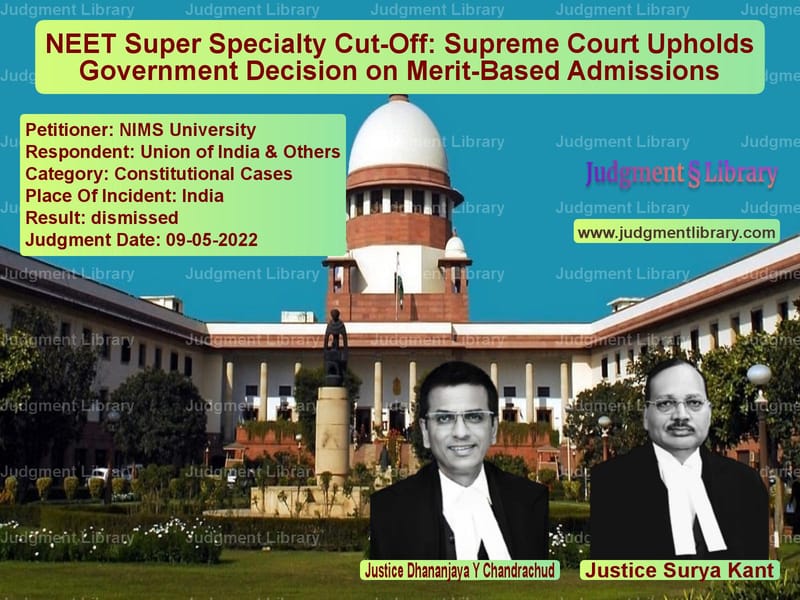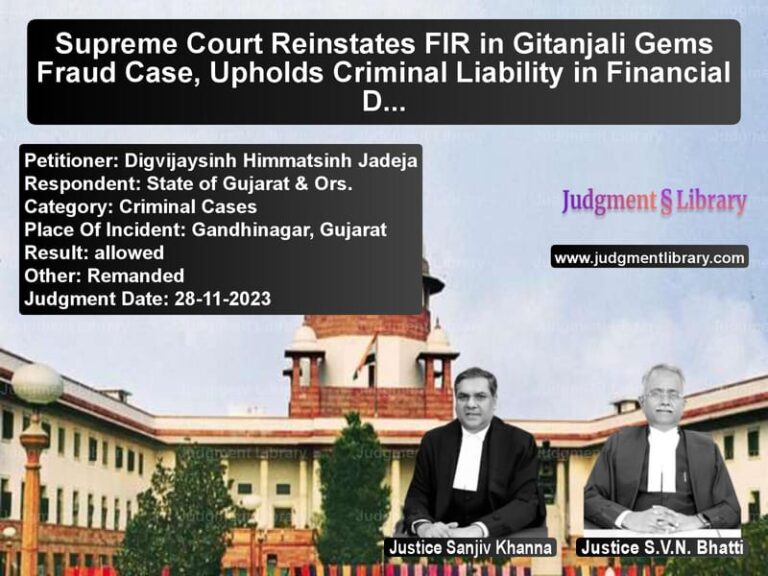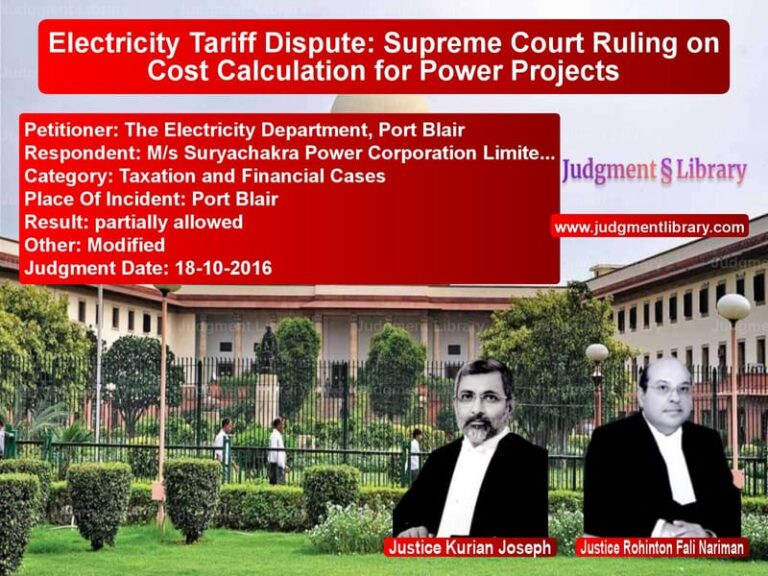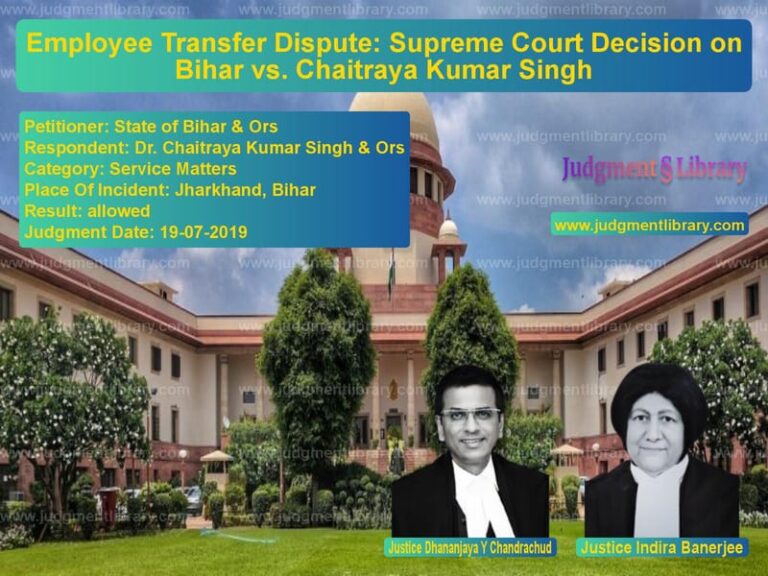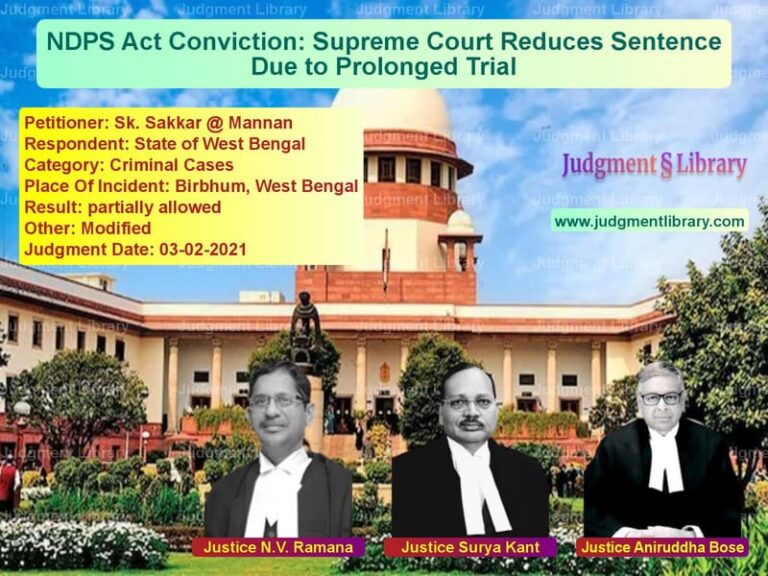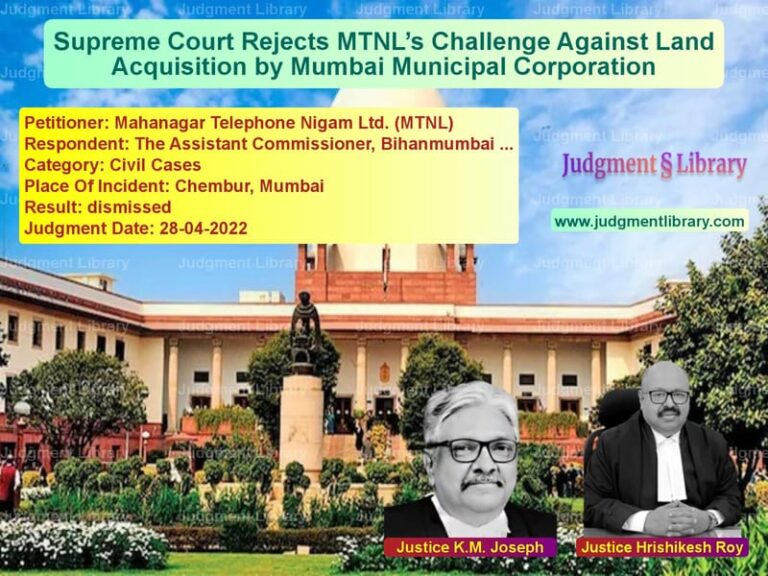NEET Super Specialty Cut-Off: Supreme Court Upholds Government Decision on Merit-Based Admissions
The Supreme Court of India recently delivered a significant verdict in NIMS University vs. Union of India & Others, concerning the reduction of the NEET Super Specialty cut-off percentile. The case revolved around a plea seeking a lowering of the percentile for admission to vacant seats in DM/MCh courses. The petitioners argued that a large number of seats remained unfilled due to the high cut-off, and a reduction would allow more candidates to qualify. However, the Court upheld the government’s decision, emphasizing the need to maintain academic standards in Super Specialty courses.
Background of the Case
The National Eligibility-cum-Entrance Test for Super Specialty (NEET-SS) is an advanced-level examination conducted for admission into DM (Doctorate of Medicine) and MCh (Master of Chirurgiae) courses. These courses represent the highest level of medical specialization in India, and entry is strictly merit-based.
The petitioners approached the Supreme Court under Article 32 of the Constitution, requesting:
- A reduction in the NEET-SS cut-off percentile below 50.
- Conduct of a mop-up and stray vacancy round for unfilled seats in DM/MCh courses.
- A direction to the government to review its decision and allow for greater flexibility in admissions.
The petitioners pointed out that in previous academic years (2019-20 and 2020-21), the cut-off had been reduced, allowing more candidates to qualify. They argued that failure to reduce the cut-off would lead to a waste of valuable medical seats, affecting healthcare services across India.
Arguments of the Petitioners
- In 2019-20, the cut-off percentile was reduced from 50 to 30, leading to a significant decrease in vacant seats.
- In 2020-21, the cut-off was reduced to 45, again helping fill more seats.
- For the current year (2021-22), the cut-off remained at 50, leaving 940 seats vacant.
- Reducing the cut-off would help qualified candidates and prevent wastage of medical resources.
- The policy of reducing the cut-off in the past had benefited both students and institutions, ensuring optimal use of educational infrastructure.
- Merit must be balanced with the practical necessity of filling all available seats to maximize the training of specialist doctors.
Arguments of the Respondents (Union of India)
- The majority of vacant seats were in specialized fields such as Cardiology, Pediatric Surgery, and Nephrology, which historically have fewer takers.
- 13,000 candidates appeared for the NEET Super Specialty exam, with 9,850 qualifying for 4,691 seats.
- After discussions with stakeholders, the Ministry of Health and Family Welfare decided not to lower the cut-off, as it could compromise standards.
- Super Specialty courses require high academic and technical competence, and relaxing the admission criteria could lead to dilution of quality.
- The government had consulted medical regulatory bodies, and their expert opinion supported maintaining the existing cut-off.
- Unlike previous years, when there were administrative disruptions due to the COVID-19 pandemic, this year’s admissions were conducted under normal conditions, negating the need for a cut-off reduction.
Supreme Court’s Observations
The Supreme Court analyzed the past trends, government rationale, and the effect of lowering cut-offs on medical education before reaching its conclusion:
- Super Specialty courses involve high levels of expertise, and compromising merit could have long-term consequences.
- The decision not to lower the cut-off was taken after due deliberation and could not be considered arbitrary.
- While postgraduate medical courses have seen cut-off reductions, Super Specialty courses require a higher standard.
- The government’s argument that enough eligible candidates were available was valid.
The Court emphasized:
“Super Specialty courses are at the apex of the academic spectrum. If a considered decision is taken not to lower standards, such a decision cannot be faulted.”
Judgment and Directions
- The Court rejected the plea for a percentile reduction.
- It directed the government to conduct a mop-up round for 940 vacant seats while maintaining the cut-off at 50.
- The petition was accordingly disposed of.
Key Takeaways from the Judgment
- The Supreme Court upheld the government’s authority to determine cut-offs based on merit considerations.
- The decision reinforces that Super Specialty courses require higher academic rigor.
- The ruling prevents dilution of standards in top medical courses.
- Academic integrity and quality should not be compromised for the sake of filling all seats.
- Medical education must maintain high selection criteria to ensure the best candidates enter specialized fields.
Implications for Medical Education
The ruling has far-reaching consequences for medical admissions in India. By upholding the government’s decision to maintain the cut-off percentile at 50, the Supreme Court has reinforced the importance of academic excellence in Super Specialty medical courses. The key implications include:
- Preserving Quality Standards: The decision ensures that only the most qualified candidates are admitted into DM/MCh programs, preserving the integrity of advanced medical education.
- Precedent for Future Cases: The ruling sets a precedent for judicial intervention in academic policies, indicating that courts will defer to expert regulatory bodies on such matters.
- Long-Term Impact on Healthcare: By maintaining high selection criteria, the Court ensures that India continues to produce top-tier specialists equipped to handle complex medical cases.
- Need for Alternative Solutions: Medical institutions and policymakers may need to explore other ways to optimize seat utilization without compromising quality.
Conclusion
The Supreme Court’s ruling in NIMS University vs. Union of India reinforces the importance of academic standards in medical education. While recognizing the need to fill seats, the Court upheld the government’s decision not to reduce the cut-off, ensuring that Super Specialty courses maintain their rigorous requirements. The judgment highlights that medical education policies must strike a balance between accessibility and excellence, and courts will support well-reasoned decisions made in the interest of public health.
Petitioner Name: NIMS University.Respondent Name: Union of India & Others.Judgment By: Justice Dhananjaya Y Chandrachud, Justice Surya Kant.Place Of Incident: India.Judgment Date: 09-05-2022.
Don’t miss out on the full details! Download the complete judgment in PDF format below and gain valuable insights instantly!
Download Judgment: nims-university-vs-union-of-india-&-oth-supreme-court-of-india-judgment-dated-09-05-2022.pdf
Directly Download Judgment: Directly download this Judgment
See all petitions in Public Interest Litigation
See all petitions in Fundamental Rights
See all petitions in Education Related Cases
See all petitions in Judgment by Dhananjaya Y Chandrachud
See all petitions in Judgment by Surya Kant
See all petitions in dismissed
See all petitions in supreme court of India judgments May 2022
See all petitions in 2022 judgments
See all posts in Constitutional Cases Category
See all allowed petitions in Constitutional Cases Category
See all Dismissed petitions in Constitutional Cases Category
See all partially allowed petitions in Constitutional Cases Category

